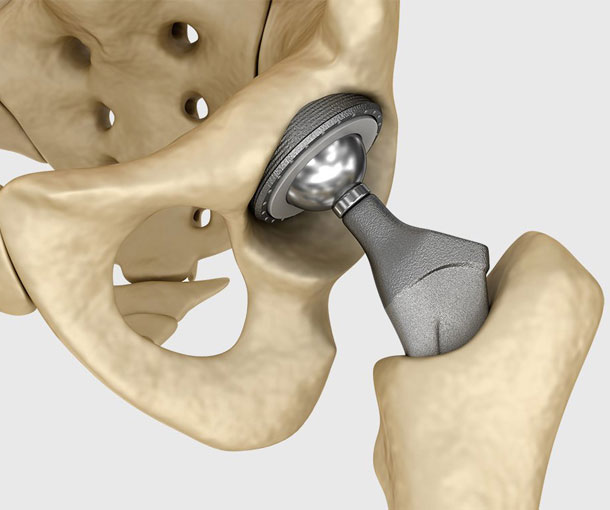Hip Replacement
What is Hip Replacement Surgery?
Hip replacement surgery, also known as hip arthroplasty, is a surgical procedure that replaces a damaged or injured hip joint with an artificial joint or implant. Hip replacements are often performed when arthritis causes considerable hip pain and inflammation. Hip fractures and natural wear and tear are two more typical causes for hip replacement surgery.
What are the Signs You Might Need a Hip Replacement?
- Hip discomfort that hinders you from walking, bending, climbing stairs, or doing everyday tasks
- Pain in your hip even when not walking or standing
- Hip stiffness that stops you from elevating your leg
- Non-surgical procedures have failed to bring relief.
- Depression or other changes in your mental health
What are the types of hip replacement?
Total Hip Replacement
The most frequent hip procedure is total hip replacement. It replaces the whole hip structure with prosthetic components. For stability, doctors implant a stem into the patient’s femur, or thighbone, during the treatment. They use a ball to replace the femoral head and an artificial cup to replace the natural socket in the hip joint.
Partial Hip Replacement
The femoral head, or ball at the top of the femur, or thighbone, is removed and replaced during partial hip replacement. It does not take the place of the socket. A ceramic or metal ball is affixed to the top of a stem that is put into the femur’s hollow core. This procedure is frequently performed by surgeons to heal certain types of hip fractures.
Hip Resurfacing
Hip resurfacing relieves discomfort caused by cartilage loss. Damage to the natural bone ball at the top of the thigh bone is removed by a surgeon. After that, he or she resurfaces it with a smooth metal coating. A metal liner or shell is also placed in the natural bone socket of the hip by the surgeon.
Staged Hip Replacements vs. Bilateral Hip Replacements
If both hips need to be replaced, surgeons may opt for a phased hip replacement. They replace one hip at a time, giving the patient time to heal from the first operation before proceeding with the second. Alternatively, the patient might get a bilateral hip replacement, which involves replacing both hips at the same time.
A bilateral hip replacement may result in a shorter total recovery period. However, it does not work for all patients.
Bilateral hip replacement increases the risk of blood loss during surgery, and patients remain sedated for twice as long – up to four hours. Patients are also more likely to need extended hospitalization or inpatient rehabilitation.
Bilateral hip replacements are often performed on younger, healthier, and more active individuals who can endure more severe physical rehabilitation and exercise after hip replacements.
What are the risks after hip replacement surgery?
Following hip surgery, you may have the following issues:
- Dislocation
- Implant loosening
- Infection
- Blood clots
- Bone growth beyond normal edges of the bone

